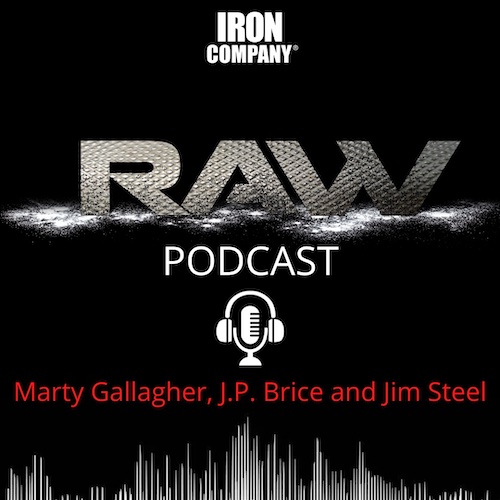
How To Make Sure Your New Year’s Resolution Doesn’t Fail
Making gains and keeping them in the new year.
After the first of the year, every year, fitness facilities nationwide are overrun by people seeking to change their physiques. The infamous New Year’s resolution is all about habit modification: regardless the resolution, by definition we are resolving to change our current behavior. I believe I saw a statistic a few years back that 70% of resolutions were aimed at improving the body. What is it we seek? All body-oriented resolutions seek something profound: a total and complete physical transformation. All the exercise devices, all the fad diet books, all the workouts, all the time, money and concentrated effort are aimed at sparking a dramatic body makeover. To put a finer point on it, a dramatic physical makeover has two component parts: a radical reduction in body fat and a radical increase in lean muscle mass.
All other physical attributes, i.e. faster, stronger, better endurance, healthier etc., all these desired traits and attributes are derived by becoming dramatically leaner and dramatically more muscular. Any athlete in any sport improves if they suddenly become leaner and stronger. Any human becomes healthier and more vibrant if suddenly made leaner and more muscular. Want better endurance? Want a better sex life? Want to jump further, leap higher and live longer? Get leaner and get more muscular. The goal is clear: the confusion arises over mode and method. How do we become leaner and more muscular? The best way to answer that is to first describe the land mines and pitfalls, the dead ends and reasons why we fail. The Taoist sect of Wu Wei would arrive at the truth by examining “wrong” actions. Here are the top ten reasons your fitness resolutions will fail and what the proper remedial solution (do the opposite) is….
- Fragmentation: there are four core elements to any successful physical transformation: progressive resistance training, cardiovascular training, nutrition and the psychological aspects. Weight training with barbells and dumbbells builds muscle; aerobics strengthens the guts; nutrition, coordinated with intense exercise, makes us lean. We need a mental approach. Normal people ignore one or more of the four core critical disciplines. You need a game plan that has a plan of attack for all four disciplines and is executed simultaneously.
- Lack of intensity in training: the human body does not grow muscle or give up its precious stored body fat (the last line of defense against starvation) without a fight. In order to grow muscle, the body needs to be taxed past its capacity. Why would the body grow muscle in response to sub-maximal efforts? In order to melt off stored body fat, intense aerobic exercise need be coordinated with disciplined nutrition. The body will not burn body fat if it is stuffed full of glycogen. Low carb status + intense cardio = melted body fat.
- Starvation dieting: anyone can lose bodyweight by starving. By reducing from wretched excess to prolonged starvation, anyone can lose weight. The problem is starvation dieting causes the body to cannibalize its own muscle tissue. The body actually eats muscle before using body fat. This is why a 400-pound man can use starvation dieting to drop to 200-pounds and still be fat. Slashing calories slams the brakes on an already sluggish metabolism. A sluggish metabolism is adept and efficient at stretching calories; an athlete’s raging metabolism is inefficient and oxidizes calories like dry logs thrown on a raging bonfire. Don’t starve yourself; you’ll burn up precious muscle tissue.
- Diet devoid of exercise: dieting without exercise makes true transformation impossible. Further, the exercise needs to be intense and consistent. Sophisticated transformational templates weave together separate and distinct cardio-lifting-nutrition game plans that are enacted simultaneously. Realistic goals in weightlifting, cardio and nutrition (body composition/bodyweight) are established. Small weekly benchmark goals are established and achieved. Periodized cycles are 8-12 weeks in length.
- The need to detox: we consume vast amount of industrial food, highly refined carbs, pastries, candy, sugar foods, canned foods, trans-fat laden frozen foods, high fructose corn syrup, alcohol – it all combines to turn us toxic. Insulin receptor sites clog and become non-functioning. The solution is to detox. Often the best way to begin a diet is to fast, stop eating, clean out. Get in touch with hunger and regain the sense of taste. Most fasters reintroduce potent, nutrient-dense, organic foods coming off the detox – slowly and deliberately. What better way to begin a diet than fast?
- Willpower and enthusiasm: the resolution maker uses willpower to initiate the process. Since willpower is finite, at some point enthusiasm need take over from willpower to power of the process. Enthusiasm is born out of tangible results: when measurable physical results appear we become enthused for the process and adherence becomes effortless. The key is finding a cohesive, comprehensive transformational system, one that delivers results before willpower gives out. Lacking tangible results, we quit.
- Lack of workout structure: what is the best division of available training time? In order to mount a serious transformational effort, resistance training and cardiovascular training each need weekly time and attention. If resistance training is done with sufficient intensity, 2-3 short sessions per week can suffice. Naturally, if you had the time and inclination to lift free weights more often, then feel free. Aerobic training creates a different flavour of intensity, sustained intensity. Generally speaking, if you have 45-minutes to devote to training, use 15 minutes for progressive resistance training and 30 minutes for aerobic training.
- Unrealistic bodyweight goals: have a bodyweight goal and set the goal into a definable timeframe. If you weigh 220 and would like to lose 20-pounds in ten weeks, this would naturally suggest a 2-pound per week reduction in bodyweight. This is a realistic rate of loss for an out-of-shape 220-pound man that becomes immersed in a really good program. That same 20-pound loss would be unrealistic for a 140-pound housewife using a fad diet and not exercising. If you were a thin person looking to add lean muscle mass, seek to add bodyweight each week for 8-12 straight weeks. Set goals into a timeframe then attack weekly goals relentlessly and sequentially.
- Everyone plays to their strengths: we are slaves to our preferences and biases and we love to do the things we are good at while avoiding those things we dislike and are not good at. Naturally, the big gains lie in bringing up our weak points. A lagging body part suddenly trained hard and often comes up fast. While we might love to bench press and hate to squat, those lagging legs, at 40% of their genetic capacity, will “come up” a hell of a lot faster than spending more time bench pressing when already at 88% of genetic potential. It goes against every fiber of our being to go against our nature – but that’s where the big gains lie. You could be a great weightlifter that hates cardio, a great runner that hates weightlifting, a great athlete that ignores nutrition – attack your weaknesses!
- Switch out Lite and low fat and fat-free for nutrient-dense: the American public has been taught to be fat-phobic. The real enemy is not saturated fat from organic sources, the nutritional culprit are empty carbs and industrial carbs. The ridiculous irony is the vast majority of “fat-free” foods are chemical cesspools: while designed to scourge every gram of fat from our diet, these “foods” cause insulin to spike, resulting in what they were supposed to prevent: body fat accumulation. The transformational athlete optimally eats nutrient-dense power foods that heal a body shattered by high intensity training. The food volume is determined by the weekly body weight goals. Whatever the goal, switch out artificial for natural.
About the Author
As an athlete Marty Gallagher is a national and world champion in Olympic lifting and powerlifting. He was a world champion team coach in 1991 and coached Black's Gym to five national team titles. He's also coached some of the strongest men on the planet including Kirk Karwoski when he completed his world record 1,003 lb. squat. Today he teaches the US Secret Service and Tier 1 Spec Ops on how to maximize their strength in minimal time. As a writer since 1978 he’s written for Powerlifting USA, Milo, Flex Magazine, Muscle & Fitness, Prime Fitness, Washington Post, Dragon Door and now IRON COMPANY. He’s also the author of numerous books including Purposeful Primitive, Strong Medicine, Ed Coan’s book “Coan, The Man, the Myth, the Method" and numerous others. Read the Marty Gallagher biography here.



